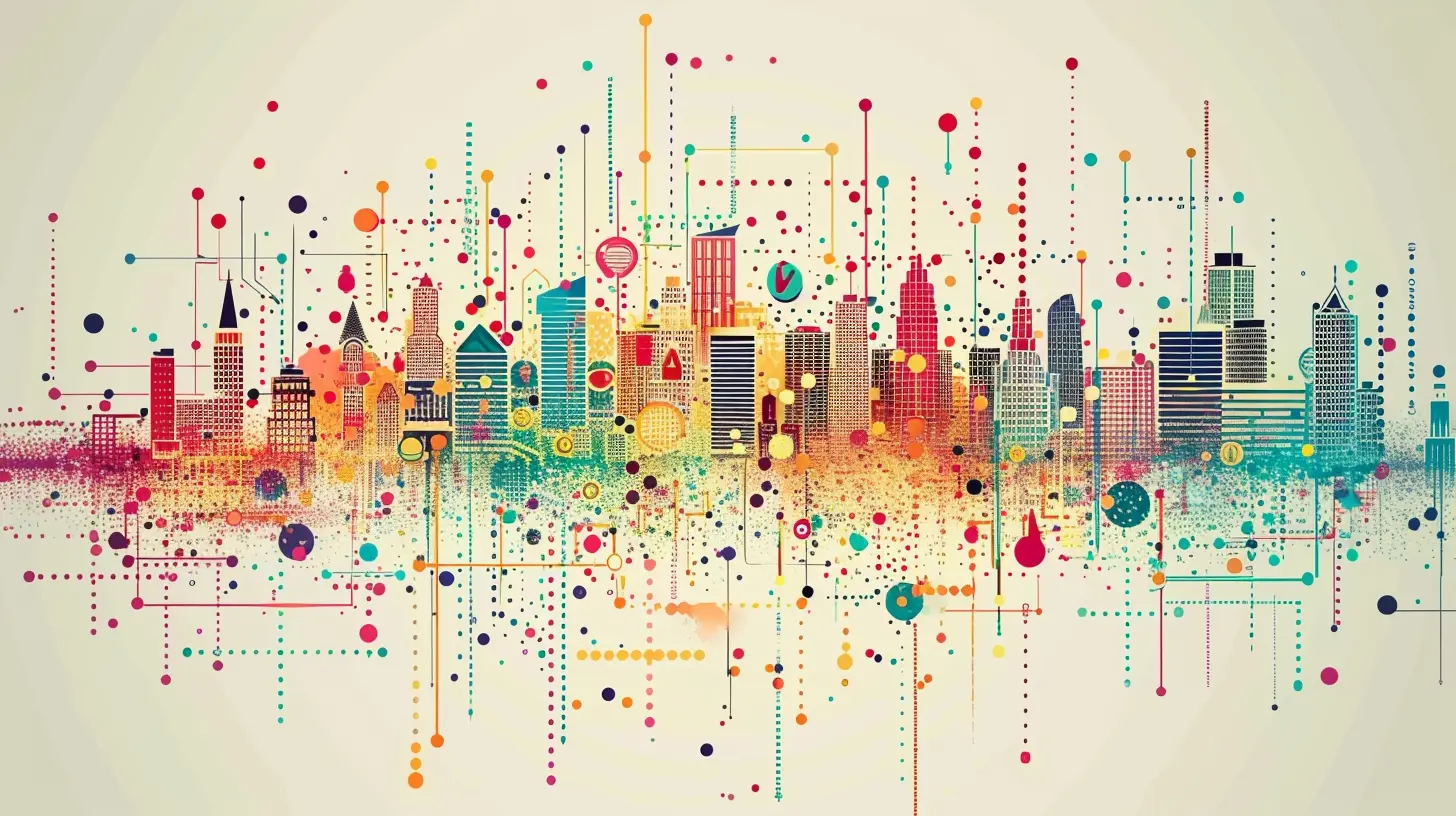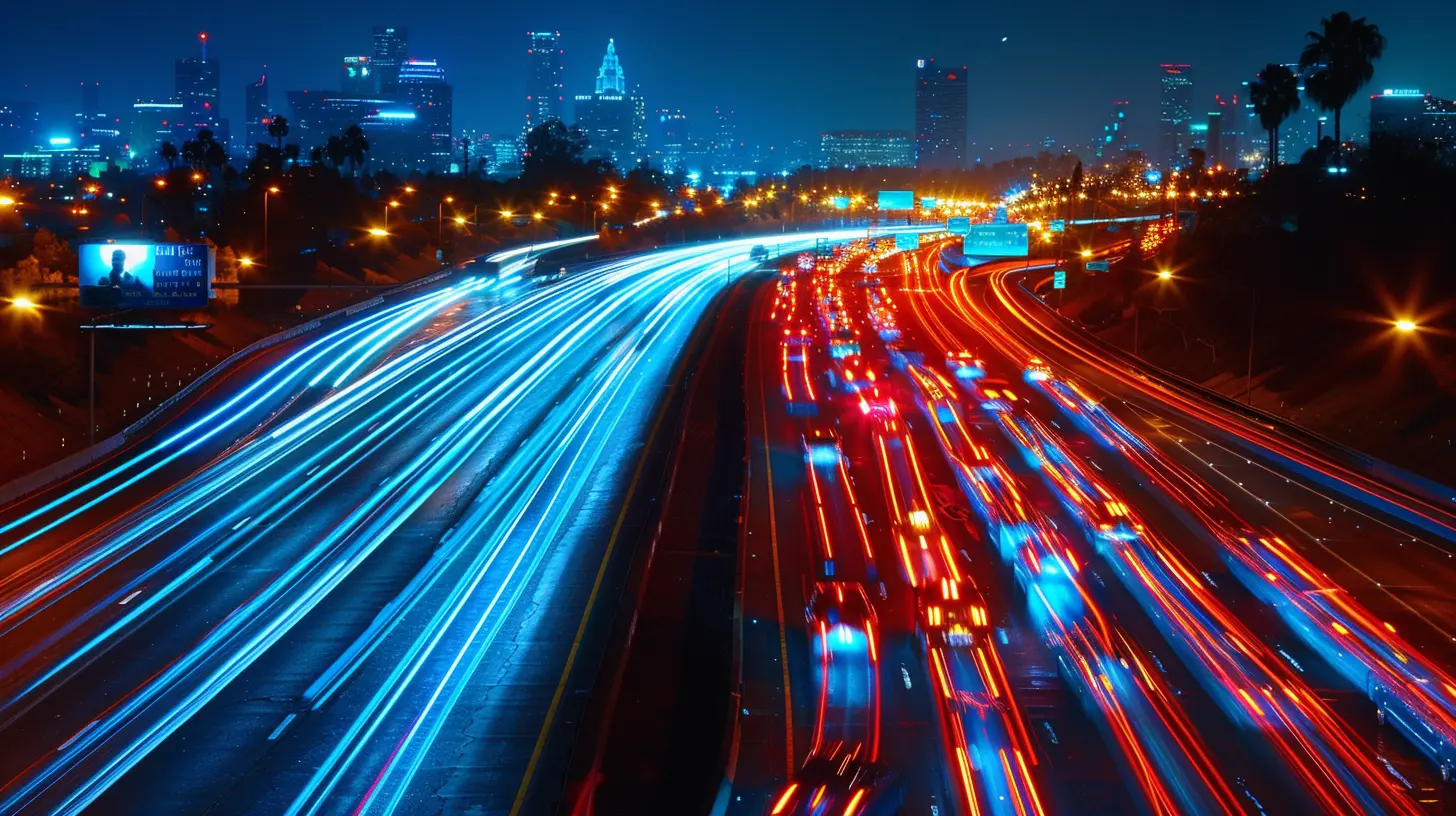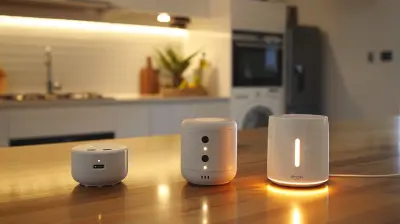How IoT Networks Are Shaping the Future of Smart Cities
19 November 2025
Let’s just face it: the phrase “Internet of Things” (IoT) sounds like something straight out of a science fiction novel, right? Like, what’s the “thing”? And why is the internet involved? Are our toasters texting each other behind our backs? (Spoiler alert: Kind of.)
But jokes aside, IoT is no longer just a buzzword tossed around at tech conferences or printed on the side of a shiny new gadget box. It’s the connective tissue tying together the very foundation of smart cities — and it’s shaping your future whether you realize it or not.
So, grab your coffee, put on your futuristic thinking cap, and let’s dive into how IoT networks are redefining urban life for the better.
What Exactly Is IoT? And Why Should I Care?
Before we start talking smart cities and futuristic utopias, let’s break down what IoT actually means.IoT, aka the Internet of Things, is basically a fancy term for a giant family of physical devices (aka “things”) connected to the internet. Your smartwatch? IoT. That thermostat you control from your phone? Yup, IoT. Even those city-wide traffic lights that magically adjust during rush hour? You guessed it.
These devices collect data, talk to each other, make decisions (automagically), and share information through networks without any human needing to hit the “Send” button.
So why should you care? Because IoT is becoming the plumbing system of modern cities — invisible but essential. And we're not talking about just futuristic toilets (although… those too).
Smart Cities 101: What Makes a City “Smart”?
A smart city isn’t about flying cars (yet) or robot mayors (also yet). It’s about using tech and data to improve how a city functions — from traffic and waste management to public safety and energy consumption.Think of it as giving cities a brain.
With IoT devices acting as neurons and nervous systems, smart cities process tons of real-time data to:
- Reduce congestion
- Monitor air quality
- Optimize energy usage
- Improve emergency responses
- Make your daily life, well, less frustrating
Now that we’ve got the basics covered, let’s geek out on how IoT networks are pulling the strings behind the curtain.
Traffic Jams, Be Gone: Smart Transportation Systems
Raise your hand if you've ever sat in traffic for so long that you questioned all your life choices. 🙋 Yeah, same.Enter smart transportation, where IoT networks are the unsung heroes that actually help your city flow smoothly. Here’s how:
🚦 Adaptive Traffic Lights
Ever wondered why some lights seem to take forever to change? Not anymore.IoT sensors embedded in roads and traffic lights collect real-time data on vehicle flow. If one road’s backed up, the system can automatically adjust the light patterns to ease congestion.
It’s like your city suddenly got a street-savvy traffic whisperer.
🚌 Smarter Public Transit
Buses and trains fitted with IoT sensors can send out live updates about delays, crowdedness, or breakdowns. That means fewer "Where's my bus?!" moments and more informed commuters.Bonus: Routes can be optimized based on passenger patterns. So your city learns how you move and adapts accordingly. That’s pretty next-level.
Cleaner, Greener Cities with IoT
Let’s talk trash — literally.If there’s one thing cities are struggling with, it’s waste management. (No one wants overflowing bins in the middle of downtown, right?)
🗑️ Smart Bins
IoT-enabled trash bins monitor fill levels and notify sanitation departments when they’re almost full. Instead of sending out garbage trucks on fixed schedules, pickups happen only when needed.That means fewer trucks on the road, less fuel wasted, and no trash waterfalls.
🌱 Smart Energy Grids
IoT devices also help manage power demand and consumption across the city. Smart meters in homes and public buildings can detect when energy usage spikes and balance loads accordingly.Imagine charging your electric car at night and your house automatically choosing the cheapest time (and cleanest energy source) to do so. That’s efficiency wrapped up in nerdy goodness.
Safety First: IoT and Public Security
Okay, now onto something serious — public safety.How does IoT help keep us safe without being creepy Big Brother?
🚨 Smart Surveillance
Before you panic — no, your toaster isn’t spying on you. But IoT-enabled security cameras can detect unusual patterns and alert law enforcement in real-time.For example, if a crowd suddenly gathers in a usually empty area, the system sends out an alert for investigation. It’s all about faster response, not invasion of privacy.
🔥 Disaster Management
IoT sensors in buildings can detect gas leaks, fires, or even structural weaknesses before things go kaboom. Emergency response teams can be alerted automatically, and evacuation plans can be triggered through interconnected systems.IoT’s turning cities into self-aware, quick-reacting organisms. Think of it like Spidey-sense, but for skyscrapers.
The Connected Citizen: How IoT Makes Life More Convenient
One of the most underrated perks of smart cities is how much easier they make your day-to-day existence.🅿️ Smart Parking
Stop circling the block like a confused pigeon. Sensors in parking spots can detect open spaces and direct you via app. Boom — stress-free parking.Bonus: No more playing parking roulette near a packed coffee shop.
💧 Water Management
Ever had a pipe burst in your apartment and flood the hallway? It’s not fun.Now imagine a city-wide system that detects leaks, monitors water quality, and manages distribution efficiently — all thanks to IoT sensors doing their thing like waterwardens.
The Backbone of It All: The IoT Network Infrastructure
Let’s pull the curtain a little further. For all these smart city magic tricks to work, you need a strong, invisible backbone.We’re talking:
- Low-power wide-area networks (LPWANs)
- 5G Networks
- Edge computing
In non-techie speak: these are the veins and arteries that carry all the juicy data from one IoT device to another — fast, secure, and without eating up all your phone data.
Plus, edge computing means that a lot of data is processed right where it’s collected, instead of being sent halfway across the internet. That means quicker decisions, lower latency, and less cloud clog.
Challenges Ahead: It’s Not All Rainbows and WiFi
Alright, let’s keep it real — smart cities aren't perfect.Here are a few of the speed bumps we still need to handle:
🔐 Security & Privacy
With thousands (if not millions) of interconnected devices, smart cities are juicy targets for cyberattacks. If someone hacks the traffic light system? Chaos. And we don’t mean the fun, confetti kind.Cities must invest heavily in cybersecurity — end-to-end encryption, secure firmware updates, and ongoing monitoring.
Oh, and make sure your smart fridge can’t be used to launch a DDoS attack. (Yes, that happened.)
💸 Costs & Infrastructure
Upgrading a city isn’t cheap. Plus, legacy systems (aka old stuff that barely works) can be difficult to integrate with shiny new IoT tech.Governments, startups, and tech giants have to play nice together, strike public-private partnerships, and ensure that no community gets left behind.
What’s the Future Look Like?
Imagine this: You wake up, and your smart blinds open to let in the sunshine. Your phone already knows the traffic’s clear, so you leave 15 minutes later than usual. You hop on a bus that knows exactly how many seats are left, zoom through synchronized traffic lights, and arrive with time to grab a latte.Meanwhile, the city’s sensors are quietly keeping the air fresh, keeping the roads safe, and making sure there’s enough water, power, and bandwidth for everyone.
Sounds like a dream, right? But it’s not sci-fi anymore. Thanks to IoT networks, we’re getting closer to this connected utopia every day.
Final Thoughts: Are We There Yet?
So, how are IoT networks shaping the future of smart cities?Short answer: From waste bins to WiFi, and everything in between.
Long answer: IoT is laying down the infrastructure for cities that aren’t just bigger — they’re better. Safer streets, streamlined traffic, cleaner energy, more thoughtful use of resources, and a lifestyle that adapts to you, not the other way around.
It’s like the city learned how to think... and it's got your back.
So next time you find a parking spot faster than expected, or your bus arrives right on time with zero wait — tip your hat to the tiny sensors making magic behind the scenes.
all images in this post were generated using AI tools
Category:
NetworkingAuthor:

John Peterson

